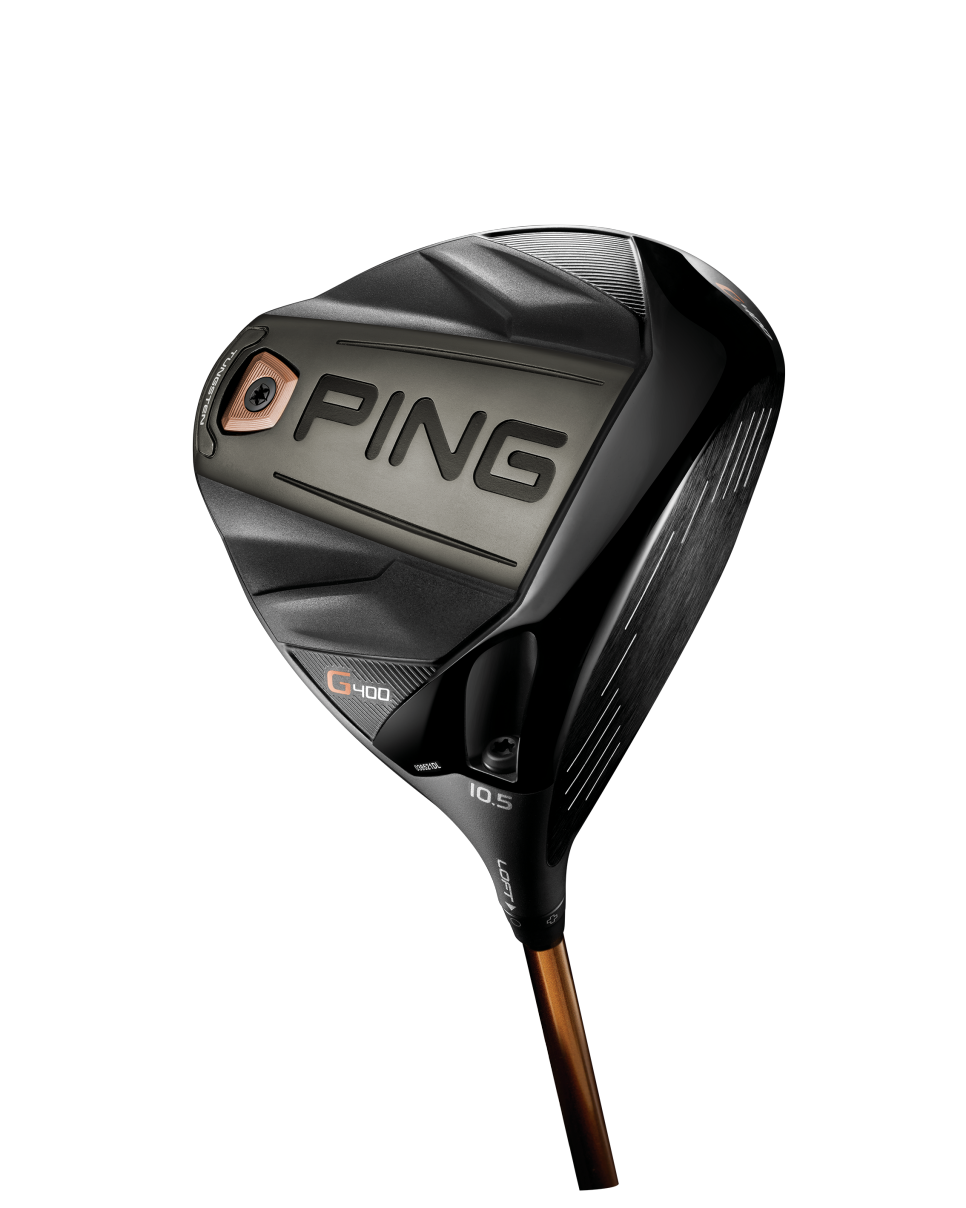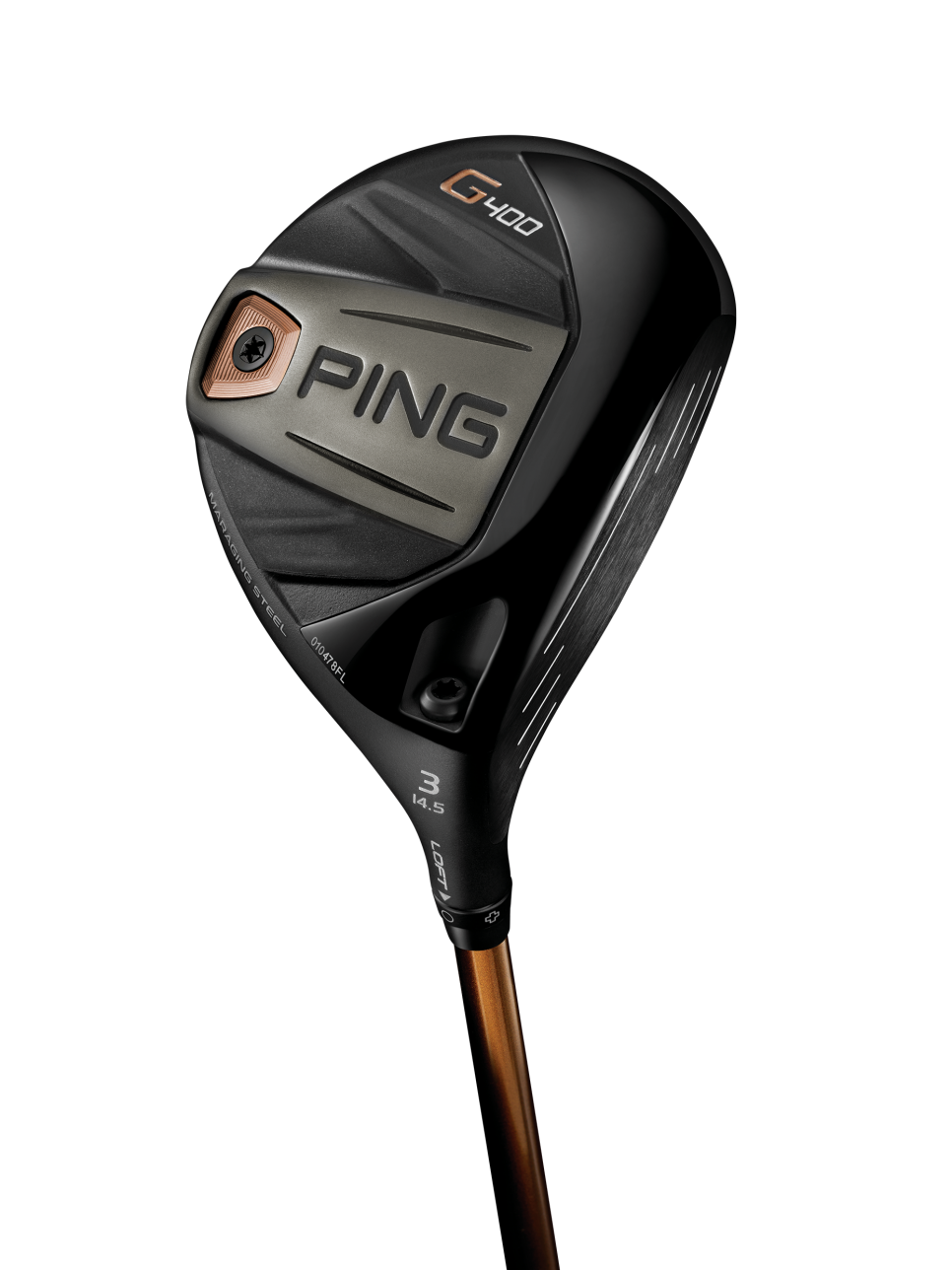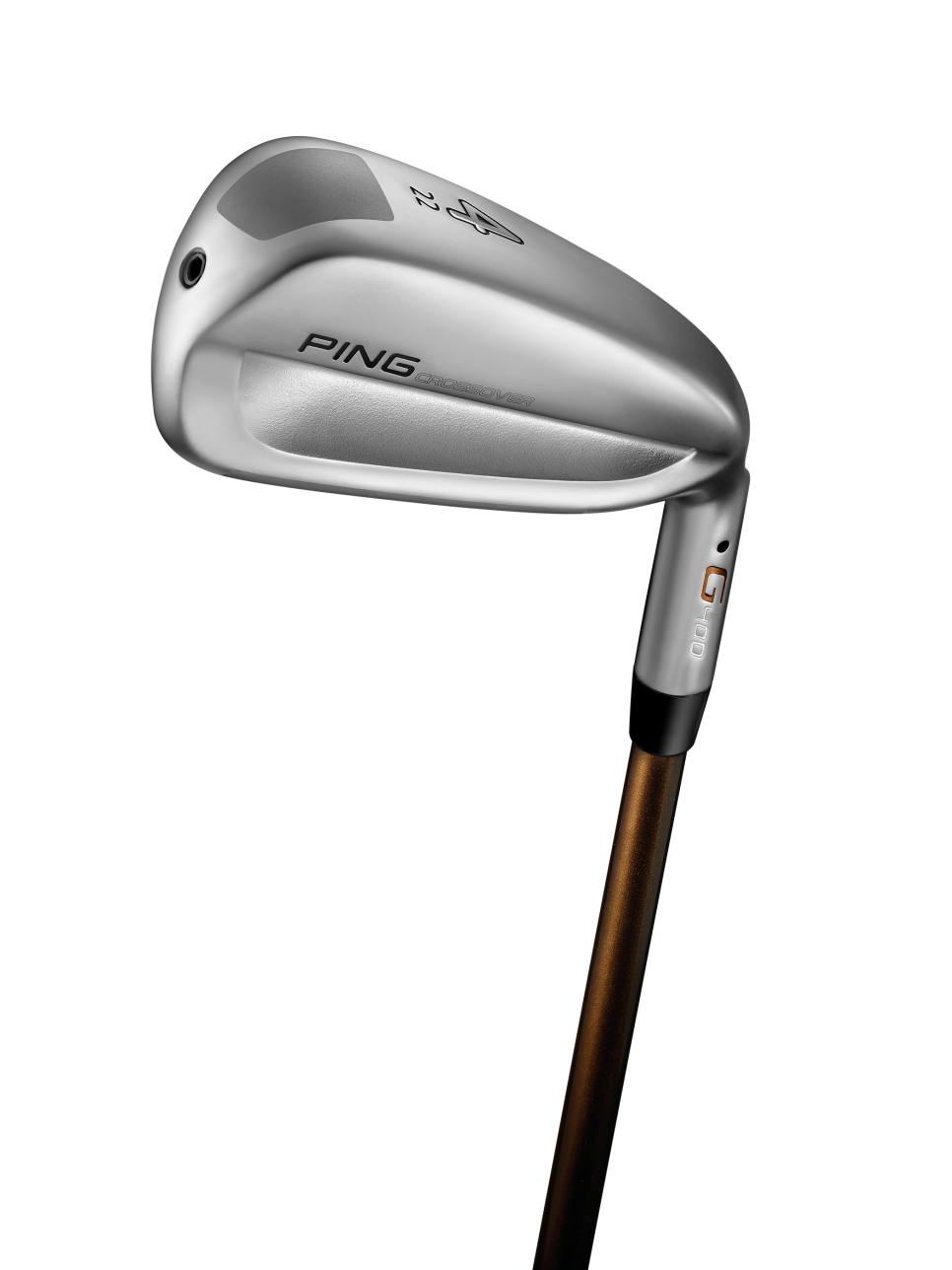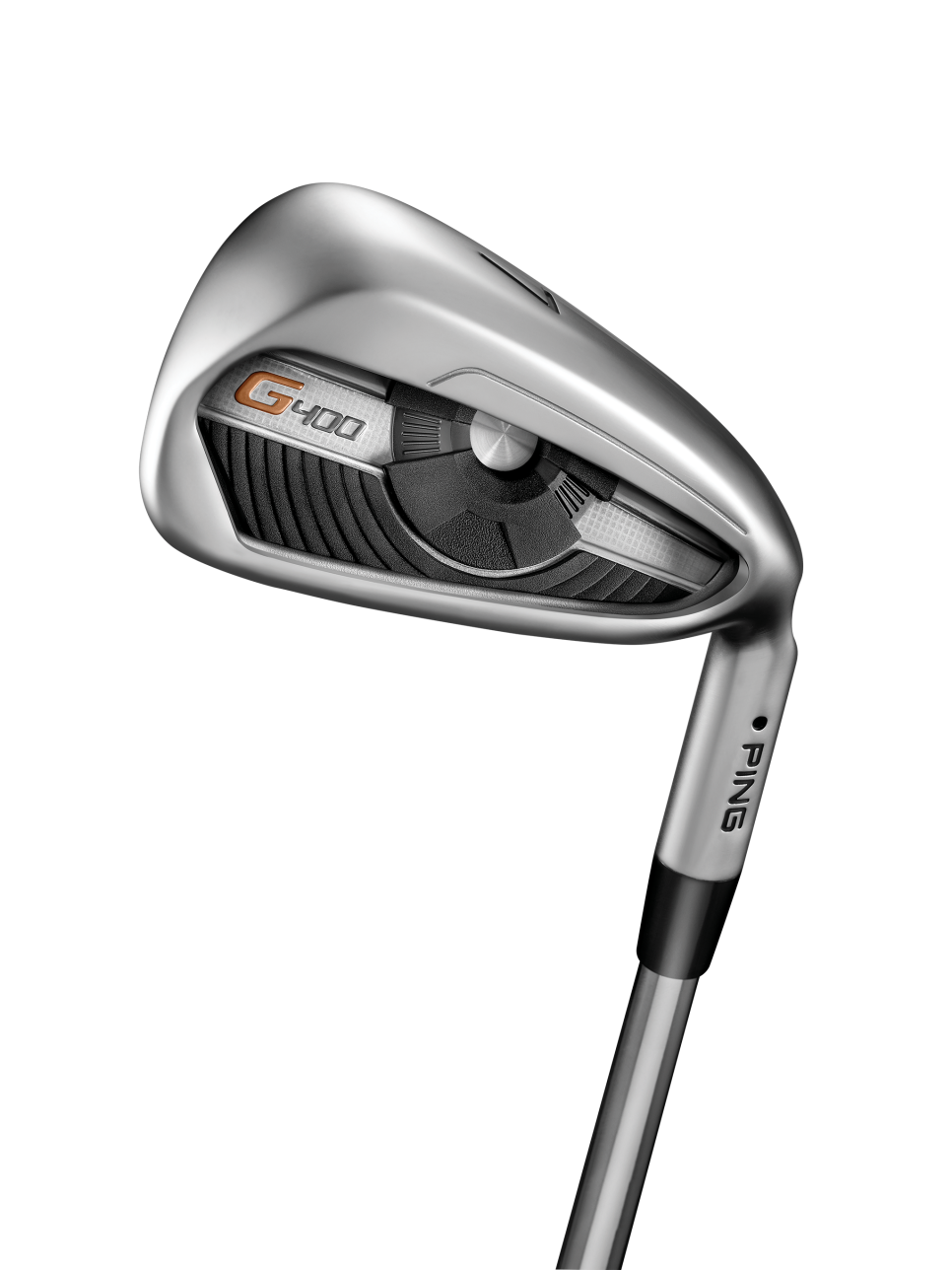Equipment
Ping G400 line of metalwoods and irons a powerful mix of speed, launch and forgiveness

The new Ping G400 series of metalwoods and irons, the eighth update of Ping’s flagship “G” line since it was first introduced in 2003, dramatically and rather artfully builds on themes that really stretch all the way back to the company’s game-enhancement traditions established by founder Karsten Solheim.
As senior design engineer Marty Jertson explains, a big theme of the Ping G400 series is “power, along with stability whenever you need it that is persistent and kind of lives with you on the golf course.”
“It’s the off-center hit performance that kind of surprises you when you don’t make a good swing,” he said.
The entire line utilizes several new materials and refined shapes, while expanding on familiar themes and technologies of the recent past. That includes the distinctive crown turbulators for aerodynamic benefits on the new G400 driver and the thin-face technology called “COR-Eye” that gets the face to flex to produce shots that launch higher with more ball speed.
G400 Driver The G400 driver’s most noticeable departure is a shape that’s ever so slightly more compact than the preceding G driver at 445 cubic centimeters. A main benefit of the shape shift is more efficient aerodynamics, enhanced by the crown ridges known as turbulators near the front.
But Jertson says the reduced shape doesn’t mean a reduction of moment-of-inertia, or off-center hit forgiveness.
“Achieving improvement in inertia is harder with the smaller footprint but achieving improvement in aerodynamics with the smaller footprint is significantly easier,” he said. “Makes one goal easier and one goal harder.”
Jertson says the G400’s shape and overall aerodynamic enhancements reduce drag forces during the entire swing by 15 percent compared to the G. As an example, that makes the aerodynamic efficiency of the G400 the equivalent of reducing a driver like Ping’s G25 from 460cc to 175cc.
But the aerodynamics get extra oomph at impact based on weight savings in the thin, ultralight crown’s web-like dragonfly pattern, internal weighting deep in the sole and an external tungsten weight that is flush with the sole. The tungsten in the G400, which is positioned directly in the rear in the standard model, slightly forward in the low-spin LST version and slightly toward the heel in the draw-biased SFT version, is 30 percent more dense than in the weights used in the G drivers.
“Now we have a shape that is tapering and gets larger in the back so the center of gravity in the weight itself is substantially more effective,” Jertson said. “It’s been a lot of fun in continuing to try to push this design goal of making the club faster through the air so we get more clubhead speed but not at the sacrifice of but actually increasing the stability through the inertial properties.”
The result, Jertson says, is a driver with a center of gravity that’s farther back and lower than any driver on the market. That means slightly more stability in the heel-toe mishits than previous G drivers and substantially more stability on high-low mishits.
Also helping is a newly designed titanium alloy face made of TS-9+. Thanks to a unique forging process, the TS-9+ material allows the face to be six percent thinner and nine percent lighter than the face insert on the G driver. Jertson says it flexes 16 percent more than the face on the G driver.
The G400 driver already has been put in play by 70 tour players worldwide, according to company chairman and CEO John A. Solheim. “We’ve never seen faster conversion to a new product than we did at last month’s U.S. Open with 13 drivers in play the first week it was available,” Solheim said.

G400 fairway woods, hybrids The G400 fairway woods and hybrids build on the G metalwoods easier-launching design by adding increased face flexibility for faster ball speeds. The key is a new C300 maraging steel face insert. That steel is used in autosport components and landing gear for light aircraft.

“The high level takeaway from G400 is it’s our thinnest, most flexible face we’ve ever made in a fairway wood,” Jertson said, noting the new material produces a face that is 20 percent thinner and flexes 30 percent more than the face on the G metalwoods and 35 percent more on the hybrids.
G400 Crossover Once again, Ping brings a transitional club to the line, the hollow, iron-like G400 Crossover. A redesigned sole (less bounce and less camber, somewhat like that of a hybrid) aims to get the club moving through the various lies more efficiently. It also features a C300 maraging steel face insert for not only a ballspeed boost but also higher launch.

“We spent a lot of time working on the way the top rail relaxes to get that high launching behavior out of the face,” Jertson said.
The G400 Crossover also features a center of gravity more forward than the original G Crossover for more traditional iron-like shot curvature.

G400 irons Called the company’s “game-enjoyment” iron by Solheim, the G400 features the higher stability “G” irons have been known for, but in a subtly sleeker shape. The G400 irons feature the same blade length as the G irons, but "the hosel transition been refined quite a bit as well to take the edge off the offset," Jertson said. A full cavity badge made of elastomer and aluminum controls vibrations for improved feel.
Still, it will get most attention for how its new face design produces higher launching shots. The key is thinning out the undercut on the iron’s top rail, said Jertson. It serves to expand the area of face that flexes, as well as saving weight that improves the iron's perimeter weighting for better off-center hit performance. There’s also a special heat treatment on the 17-4 Hyper stainless steel that makes it 40 percent stronger than traditional stainless steel. Jertson said the G400’s face bends 18 percent more than the G iron.
“This allows us to get more of that dynamic lofting during impact,” he said. “So even with the 7-iron being half-a-degree stronger loft, we’re manifesting four percent higher max height.
“Ultimately the player doesn’t necessarily care what the loft is if they can hit it farther and they can stop it when it lands.”
The stock loft on the G400 7-iron is 30 degrees. That matches the loft on the Callaway Steelhead XR 7-iron and is 1.5 degrees weaker than the loft on the TaylorMade M2 7-iron, the top two selling iron models currently on the market.
“We’re still minding the gapping and set configuration concerns, while we upgrade the feel and the impact experience,” Jertson said. “As we work on irons to go further, getting them to also feel good is a challenge.”
Pricing The full G400 line is available for pre-order and custom fitting starting today. The G400 drivers ($400) are available in three models: standard (9, 10.5 degrees), LST (8.5, 10 degrees) and SFT (10.5, 12 degrees). Each features an adjustable hosel that changes loft by plus/minus one degree.
The G400 fairway woods ($270) are available in eight lofts and three head styles: 14.5, 17, 20.5 and 23.5 degrees in standard; 16, 19 and 22 degrees in SFT; and 13 degrees in the 193cc Stretch 3 model.
The G400 hybrids ($230) are available in five lofts (17, 19, 22, 26, 30 degrees), while the G400 Crossover ($230) comes in three lofts (19, 22, 25 degrees).
The G400 irons ($900, set of eight with steel shafts) are available in 4-iron through 9-iron, as well as gap wedge (UW, 49.5 degrees), SW (54 degrees) and LW (58 degrees).

